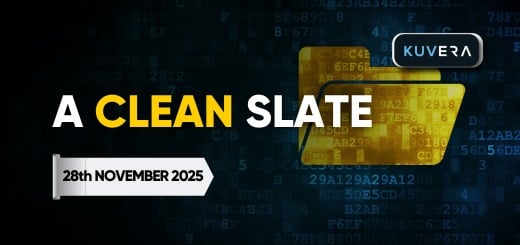In this edition, we talk about gold prices touching lifetime highs and about Nusli Wadia’s airline going broke. We also talk about the US Fed’s signal on pausing rate hikes and the latest on the state of the IPO market.
Welcome to Kuvera’s weekly digest on the most critical developments related to business, finance, and the markets.
tl;dr Hear the article in brief instead?

All that glitters is indeed gold.
Yes, you read that right. The yellow metal has touched record highs as Indian gold futures tracked global highs. Domestic gold futures this week rose to Rs 61,490 for 10 grams of the yellow metal of 24-carat purity.
In fact, gold has outscored most traditional asset classes like equity and debt in performance so far in 2023. Gold delivered an impressive 8% return in the first quarter of 2023. Analysts say that it is likely to extend the rally that helped it cross the Rs 61,000-mark in the domestic market and that it could deliver another 11% returns this year.
But this price rise may not be such a good thing after all for everyone, as it has dampened demand for jewellery and gold in India, the second-biggest market for the yellow metal in the world.
So, should you go ahead and dump tons of money into buying gold right away? While we cannot offer you investment advise, we can tell you what experts are saying.
Experts say that while gold continues to shine, investors should remain cautious. They say that instead of going all in at once, investors should start spreading their purchases over an extended period of time.
And if you are convinced you must invest, there are several options other than physical gold or jewellery that you can go in for. These include gold exchange-traded funds, gold mutual funds, digital gold and, of course, the government-backed sovereign gold bonds that are opened up for investment from time to time but can also be bought off the secondary market. Most experts say an investor with a decently sized portfolio should have between 10-15% exposure to gold, although this does vary from person to person.
Be sure though to take a thorough look at factors like expense ratios, the Goods and Services Tax that may be applicable, exit loads, brokerage as well as how the investment is taxed at exit. So, weigh in all of these costs, wisen up, and then decide!
A Pause on the Horizon
While you decide on diversifying your investments, the US Federal Reserve seems to have come to some sort of a decision on pausing further interest rate hikes.

This, after it hiked its prime lending rate by another 25 basis points, or 0.25%, this week as did the European Central Bank.
So, what does the US Fed plan to do now? Even as the Fed raised its benchmark overnight interest rate to the 5.00%-5.25% range, it dropped from its policy statement language saying that it “anticipates” further rate increases.
Experts feel this change doesn’t rule out the central bank’s policy-setting committee from hiking rates again in June. Having said that, Fed Chairman Jerome Powell said it was now an open question whether any further hikes will be necessary in an economy still facing high inflation, but also showing signs of a slowdown and with risks of a tough credit crackdown by banks on the horizon.
“We’re closer, or maybe even there,” Powell said while commenting on the end of the rate cycle.
So, will they or won’t they? We don’t know yet, but we will still continue to sit tight.
And how will this impact the Reserve Bank of India’s decision going forward? The Indian central bank may take a cue from the Fed’s decision and continue with a longish pause for now.
But we will wait for Governor Shaktikanta Das and his mandarins to take that call, and will desist from second guessing their next move.
Go First, Come Last
The Indian aviation industry has been witnessing an unprecedented boom. Not only have record numbers of passengers been taking to the skies, the country’s top airlines—the Tata-owned Air India, its affiliate Vistara and the largest carrier IndiGo—have ordered or are on course to order record numbers of aircraft that should see both Airbus and Boeing remain in business for several years to come.

On top of this, new carriers like Akasa have taken to the skies and at least one defunct airline—Jet Airways—may soon be revived.
And this, even as India builds new airports and expands existing ones into state-of-the-art facilities that meet international standards.
But amid this fanfare, one airline is staring at bankruptcy. The Nusli Wadia-promoted Go First (known earlier as Go Air) has perhaps become the first large business in India to file for bankruptcy voluntarily.
Earlier in the week, Go First filed an application for voluntary insolvency resolution proceedings before the National Company Law Tribunal (NCLT), Delhi.
The airline also said that it was cancelling its flights for the next few days as it faces a severe financial crisis.
It has been a downhill spiral for the Wadia Group airline, which wanted to go public almost two years ago and had filed for a Rs 3,600 crore initial public offering, even as the COVID-19 pandemic raged.
But the IPO never materialised, its engine supply woes mounted and, two years on, Go First has run out of money.
The budget carrier began operating 17 years back, in 2005-06, and went international in 2018-19. As of 2022, the airline had an 8.8% market share. Back in 2011 and then five years later, the airline even ordered a fleet of 72 planes from Airbus.
So, what went so horribly wrong? The airline blames faulty engines supplied by Pratt & Whitney, which it says, grounded 25 planes over the past three years, a claim the engine maker has rejected. There is even an arbitration case, whose award, the engine maker says, is being honoured.
At present, Go First is reportedly sitting on liabilities of nearly Rs 9,000 crore. The airline apparently reported a loss in the range of Rs 1,800 crore, including an Rs 800 crore notional loss due to accounting standards in the financial year ended March 2023.
So, will Go First fly soon? Seems unlikely for now, but if and when it does, we will be the first ones to inform you.
IPO Street
As the markets again come close to their lifetime highs, the IPO season, it seems, is well and truly here again.
Following the IPO of Mankind Pharma last week, Blackstone-backed real estate investment trust (REIT) Nexus Malls, which owns the country’s largest portfolio of shopping malls, will launch its IPO on May 9. The total size of the REIT IPO is Rs 3,200 crore, comprising a fresh issue and an offer for sale.
Meanwhile, TVS Supply Chain Solutions, part of the TVS Group, has filed fresh papers for its IPO. The company has cut its issue size to Rs 750 crore via both a fresh issue and an offer for sale. It had earlier planned to raise up to Rs 2,000 crore through a fresh issue. The promoters are, however, not participating in the OFS, unlike the last time.
Another company that has re-filed its IPO papers is Fincare Small Finance Bank, more than a month after the Securities and Exchange Board of India returned its draft red herring prospectus in March, asking the lenders to re-file its papers with certain updates, including its latest financial earnings.
The lender’s IPO comprises a fresh issue of shares worth up to Rs 625 crore and an offer for sale aggregating up to 1.7 crore equity shares by a promoter and investors selling shareholders.
The flurry of IPOs is unlikely to end just here. At least two other companies—cable operator Tata Play and drone maker IdeaForge Technology—have secured SEBI’s nod for IPOs.
So, if you are a retail investor looking for listing gains, keep a track of all these developments. But please, and we cannot stress this enough, remain cautious while applying for any of these listings. It is after all your own hard-earned money on the line.
Market Wrap
The past month has been largely good for the broader markets, helping both the Sensex and the Nifty make good on most of their losses since the beginning of the year. This week, benchmark indices recorded a gain of over 1% in the first three trading sessions but fell about 1% each on Friday to end flat.
Top gainers during the week included the likes of Bajaj Finance, Maruti Suzuki, Indian Oil and Larsen & Toubro. Other stocks that ended in the green included Britannia Industries, Bharat Petroleum, Titan, Tech Mahindra and ITC.
The HDFC twins—HDFC Ltd and HDFC Bank—as well as GAIL India, Axis Bank, IndusInd Bank and HCL Tech were among the counters that ended in the red. Others that lost ground included Hindustan Unilever, ONGC and Vedanta.
Other headlines
- GST collections for April touch record high of Rs 1.87 trillion
- India’s services PMI jumps to 13-year high of 62.0 in April
-
Adani Enterprises Q4 net profit doubles to Rs 722.5 crore
-
TVS Motor Q4 net profit up 2% at Rs 336 crore; revenue at Rs 8,031 crore
-
Adani Ports and Special Economic Zone sells Myanmar Port for $30 million
-
Godrej Properties records 58% surge in Q4 net profit to Rs 412 crore
- JSW Steel to invest $145 million to upgrade operations at Ohio plant in US
-
Mahindra & Mahindra vehicle sales rise 36% to 62,294 units in April
- Bajaj Auto April total sales rise 7% to 3,31,278 units
That’s all for this week. Until next week, happy investing!
Interested in how we think about the markets? Read more: Zen And The Art Of Investing
Watch here: Investing in Flexi cap funds
Start investing through a platform that brings goal planning and investing to your fingertips. Visit kuvera.in to discover Direct Plans and Fixed Deposits and start investing today. #MutualFundSahiHai #KuveraSabseSahiHai











